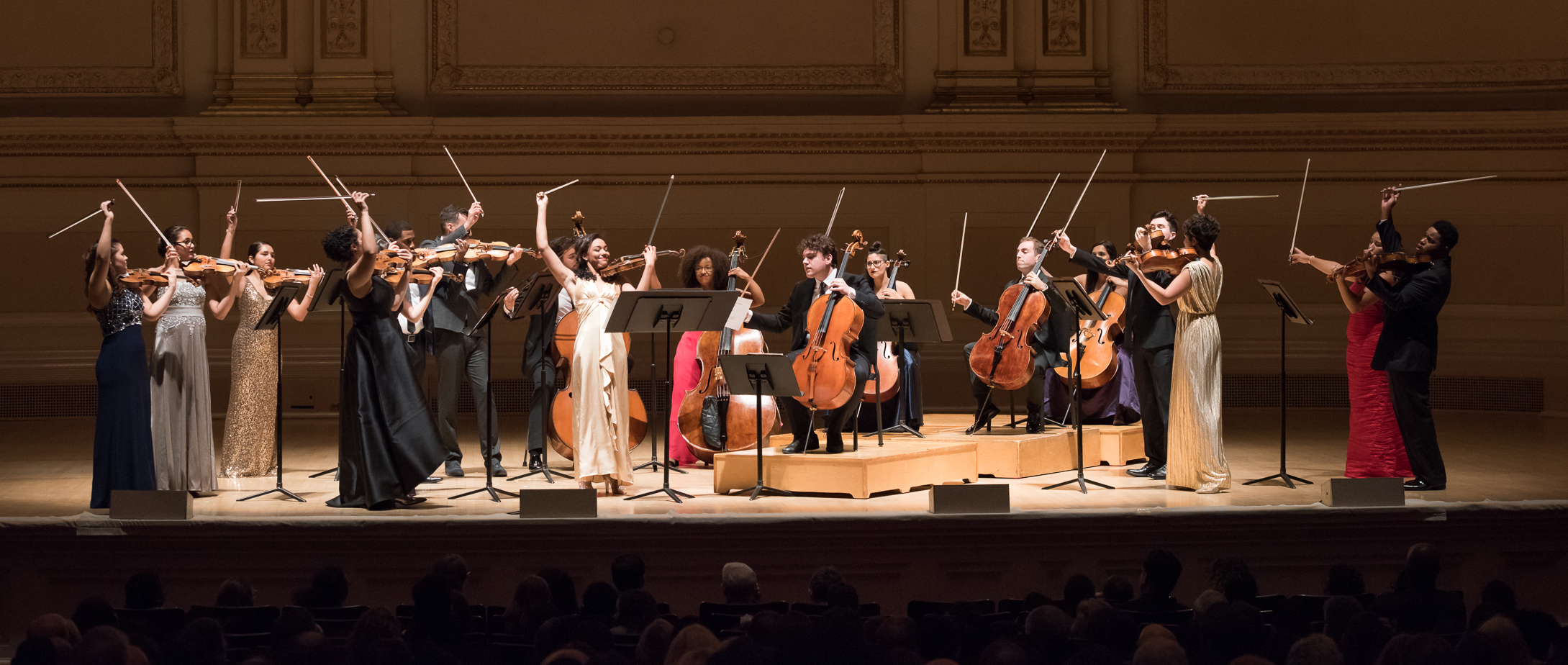How Planning, Partnerships, and Philanthropic Trends Add to the Bottom Line

Photo: Sphinx Virtuosi at Carnegie Hall | Photo Credit: Nan Melville
*Guest post by Stephanee Strasburg, Director of Institutional Partnerships, Sphinx Organization
The Sphinx Organization marked it’s 20th anniversary in 2017 and in that time our organization has grown steadily and sustainably to annual budget of $5 million that supports our mission and programming to transform lives through the power of diversity in the arts. The growth and sustainability of Sphinx’s bottom line can be primarily attributed to planning, partnerships, and trends in philanthropy.
Planning: Thoughtful planning in regards to both revenue and expense has allowed Sphinx to plan for opportunities, shortfalls, and to grow sustainably over time. For example, whenever and wherever possible, Sphinx operates under a forward-funding schedule where funds from contributed revenue raised during the current year (i.e. 2018 Sphinx contributed revenue) will provide the basis and support for next year’s programming budget (i.e. 2019 Sphinx programming & operations). The forward-funding schedule and model allows Sphinx to plan ahead for any unanticipated shortfalls or surpluses and adjust our operations and programming accordingly.
Partnerships: Sphinx’s growth and sustainability over the years is due in large part to the long-term investment and partnership by Sphinx’s institutional partners. In 2017, through increased investment and multi-year commitments from Sphinx’s foundation partners, we were able to increase our foundation and government support by 35%. Increased multi-year grant commitments as well as increased investment in the capacity-building and general operations have added to Sphinx’s bottom line, sustainability, and long-term planning.
In addition to contributed revenue, the establishment of long-term in-kind support and programmatic partnerships have also contributed significantly to Sphinx’s financial health and sustainability. Sphinx’s programming is carried out in close partnership with our artistic, education, and community program partners across the country. Our education programs operate in the schools and communities we aim to serve, our ensembles are presented and perform in venues across the country, and our cornerstone program, the Sphinx Competition has a home at the Detroit Symphony Orchestra’s Max M. and Marjorie S. Fisher Music Center. These partnerships and approach to programming are intentional and designed to reduce the overhead costs and virtually eliminate capital expenses. It also allows us to invest in our staff and programs and also allows us reach our audiences and the communities we serve by coming to their schools, neighborhoods, and arts/culture venues with our mission, artists, and programming.
Trends in Philanthropy: Sphinx, as a culturally-specific arts non-profit, has at times had a hard and narrow fit within the larger trends of arts funding and the priorities of arts grantmakers. However, in the past 3 to 5 years Sphinx has been able to capitalize on the trend of increased investment and funding towards diversity, equity, and inclusion (DEI) in the arts. Sphinx serves as a leader and champion of DEI in classical music and has seen a significant increase in support and investment specific to its mission and work by both our philanthropic and artistic/programmatic partners.
In addition, Sphinx has benefitted from a philanthropic trend that has directly supported the continued growth and sustainability of our organization and promotes flexibility in funding. Many of our foundation and institutional partners are beginning to understand the constraints that often come with grant dollars and have invested more in the areas of capacity-building, general operating support, and have provided opportunities for multi-year funding to support the sustainability of our programs and organizational operations. This added flexibility in funding allows Sphinx to have the room to grow, plan and invest in our programs and in our future. Finally, Sphinx has also experienced a shift and trend in philanthropic thinking that understands and supports the need for investment in non-profit organization sustainability and financial health. Specifically, the growing understanding by foundation and institutional partners that planning and budgeting for a modest surplus is both smart and practical and will help the sustainable and long-term continued growth of the non-profit organization and sector.
###
The Sphinx Organization is the arts and social justice non-profit dedicated to the mission of transforming lives through the power of diversity in the arts. We fulfill our mission through four program areas: Education & Access à Artist Development à Performing Artists à Arts Leadership; These programs serve as a pipeline to support diversity, equity, and inclusion in the classical music field, at every level. In its first 20 years Sphinx has developed a network of 600 classical musicians of color; launched four professional ensembles comprised of Black and Latinx artists; produced over 10 national tours that reach more than 10,000 in audiences annually; and have developed partnerships with over 100 international programmatic and artistic partners. To learn more about the mission and work of the Sphinx Organization visit: www.SphinxMusic.org or https://youtu.be/3Tdw2-HkSaQ.